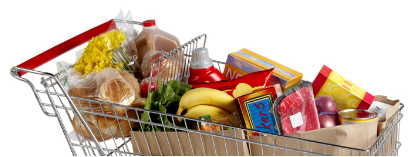Five Tips to Manage Fresh Food Shrinkage

By Seth Strauser
Working in fresh food must be rewarding as you are serving people who care about
what they eat and are looking for the tastiest produce and tips on how to
prepare and cook delicious meals.
But grocers and supermarkets who want to give their valued shoppers a great
experience do have to tackle challenges in regard to stock monitoring, shrinkage
and theft to make sure that the food is available on the shelf and remains
fresh.
Here are 5 tips to ensure a competitive advantage in grocery retailing:
1. Conquer the Shopper's Experience
When the fresh food area is very busy, the customer experience is often
overlooked. It's a bustling department with people preparing produce or charging
in and out of the coolers with trays of deli meat, for instance. There are often
times when there is no-one to pay attention to the customer or walk the floor.
Fresh food is popular because it offers customers the chance to order something
bespoke or special and customers often want advice on ingredients, cooking times
and recipes. Counter staff can deliver those 'special touches' that inspire
loyalty, like fetching a fresh tuna steak from the back room. But if the wait to
be served is too long or the staff are too busy to engage with the customer,
orders will be lost and rivals will benefit. The customer-focus is vital and
supermarkets and grocers are always looking for ways of freeing up staff from
some of the other tasks that take up their time.
2. Ace On-Shelf Availability
In most stores, fresh Food staff still wander round with clipboards, paper and
pencil to carry out a stock count. I went out at (?) 10 retailers in a row on a
grocery tour and they all had this pen and paper process. When I asked one guy
after a count measure what he needed to re-stock in the fridge he said he wanted
seven of the same item - I could see there were actually three different
versions of the item in question in the pile he was looking at, so he would have
made a wrong call and put too much of one item out on display. Displaying too
much of a product can result in a freshness problem - but on the other hand if
the item is not on the shelf, it's not going to be purchased. Items like red
meat or venison offer a higher margin than any pre-packed version and no
retailer wants to lose a sale of fresh produce, hence the importance of
processes that keep the right level of stock on display.
3. Tackle Theft Successfully
Theft is prevalent and pervasive in the Fresh Food sector. Red meat, sea food,
deli meat and cheeses are all high value items that thieves can resell to other
retailers, restaurants or private individuals. The fresh food counter is often
at the back of a store and no-one imagines a customer is just going to stick a
fresh piece of meat in their pocket and walk out the main exit - but it happens
all too often.
One of the big retailers implemented a new loss prevention solution and caught a
man with a big bag of dog food who had dumped 70% of the contents and filled it
up with premium meat. He was carrying a notebook with orders from restaurants in
multiple states and would drive from state-to-state stealing from a particular
retailer, taking more than $1m worth of stock over several months.
Not all theft is so organised. Smaller scale theft can be attributed to
desperate people driven by a need for food or shoppers looking to upgrade their
purchase with a price label switch. Internal theft happens as well - young till
staff on short-term contracts can help their friends defraud the company.
Read more here.